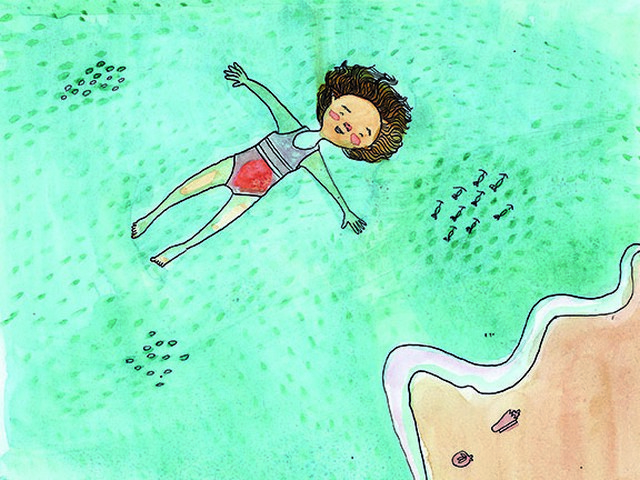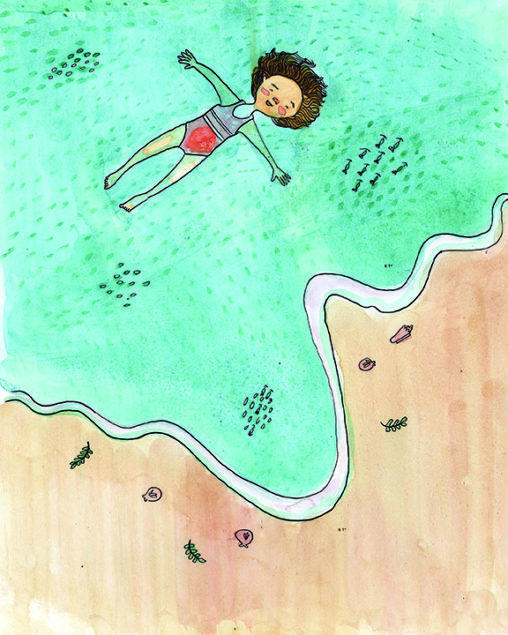“What would you like to learn about the oceans?”
This is the question I pose to my Marine Science students at the start of each semester.
“Sharks.”
And that is their standard response. “Sharks.” Plus the occasional mention of dolphins or whales. But mostly sharks.
“What about plankton?” I ask. “To understand the entire ecosystem, we need to understand the plankton.”
I pause, scanning my students’ puzzled expressions. Undoubtedly, one of them will blurt out, “You mean like Mr. Plankton? From SpongeBob SquarePants?!” Now I have their attention.
Plankton, by definition, are organisms that cannot swim against the ocean currents. Their name is derived from the Greek adjective planktos, meaning “drifter.” Most planktonic organisms are very small—microscopic to a few centimeters in length—while others, such as jellyfish, can be much larger. In fact, the lion’s mane jellyfish (Cyanea capillata), with tentacles that can stretch over 120 feet, is a contender for the longest animal of all time.
There are two types of plankton: phytoplankton (the “plant” plankton) and zooplankton (the “animal” variety). Ranging from microscopic, single-celled organisms to macroscopic seaweeds, phytoplankton are marine algae that photosynthesize, or make their own food using energy from the sun. In a balanced ecosystem, phytoplankton form the first link of the food chain, feeding an assortment of sea creatures (including zooplankton). In some cases, an excess of nutrients in the water can produce a high concentration of phytoplankton, resulting in harmful algal blooms.
Zooplankton include both microplankton (smaller than a millimeter in size) and macroplankton (larger than a millimeter), and their one claim to fame is Sheldon J. Plankton, the chief antagonist in the cartoon series SpongeBob SquarePants. Sheldon is a type of zooplankton known as a copepod; copepods make up 70 percent of zooplankton and are a vital part of the oceanic food chain, feeding on marine algae and bacteria while also serving as an important source of protein for numerous ocean-dwelling animals. Measuring about 0.04 to 0.08 inches long, copepods have a teardrop-shaped body with large antennae, several pairs of legs, and a segmented tail. Like Sheldon, most have transparent bodies and a single eye in the center of their head. Copepods are, by some estimates, the most abundant animal on our planet.
The other 30 percent of zooplankton is comprised of various critters, including chaetognaths, or “arrow worms”—ferocious predators with large hooks to seize their prey—and krill, small, shrimp-like crustaceans and the primary food source of baleen whales. Copepods, arrow worms and krill will “drift” their entire lives. However, many animals are plankton for only part of their lives, typically the larval stage; common examples are the larvae of fish, squids, clams, crabs, worms, corals, starfish, sea stars, and urchins.
So, why should we care about plankton? (The question buzzes through the heads of my students.) Well, plankton are incredibly impressive despite their size. Plankton are often indicators of ecosystem change, and phytoplankton in particular produce a significant portion of the world’s oxygen supply. More importantly, plankton are the base of the oceanic food chain. In short, all marine life depends on their existence. So while we all may be infatuated with Shark Week (I doubt “Plankton Week” would perform as well in the ratings), we should show these drifters some appreciation for all that they do.
Author’s Bio
Leopoldo Llinas is a forward-thinking father who hopes to educate the young men and woman who will make this world better. He holds a PhD in Marine Biology and Fisheries from the University of Miami Rosenstiel School of Marine and Atmospheric Science. leollinas@gmail.com








